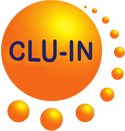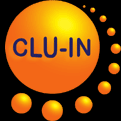Search Result
REMOVAL OF PCDD/FS, PCP AND MERCURY FROM SEDIMENTS: THERMAL OXIDATION VERSUS PYROLYSIS
Chang, M.-B. Chang, Y.-C. Hsu, and S.-H. Chang.
Chemosphere 207:10-17(2018)
Filed Under: Research
Filed Under: Research
A continuous pilot-scale thermal treatment system equipped with effective air pollution control devices was used for simultaneous remediation of sediments contaminated with PCDD/Fs, PCP, and Hg. The removal efficiencies of these three pollutants in sediments collected from (1) a seawater pond and (2) a river, respectively, were evaluated via thermal treatment processes. PAHs and chlorobenzenes (CBz) formed during thermal oxidation and pyrolysis were also analyzed to gain a better understanding of chlorinated organics behavior. Results indicated that low-molecular-weight PAHs were closely related to the formation of CBz, PCDD/Fs, and CPs, while low chlorinated PCDD/Fs and CBz predominated in flue gas with thermal oxidation. Particulate matter concentration was higher in thermal oxidation than pyrolysis due to the higher air flow rate of thermal oxidation, which might bring more particles out of the furnace and have a greater potential to form PCDD/Fs within air pollution control devices. Pyrolysis performed more effectively than thermal oxidation for removal of total PCDD/Fs and thus was more suitable for remediating the contaminated sediment. PCDD/Fs, PCP, and Hg removal efficiencies in sediments using pyrolysis increased with increasing operating temperature and retention time. Overall, residual concentrations of PCDD/Fs and PCP in river sediment were higher than those in seawater-pond sediment; significant formation of tar was observed due to higher organic matter content in river sediment.
Chemosphere 207:10-17(2018)
Filed Under: Research
Filed Under: Research
A continuous pilot-scale thermal treatment system equipped with effective air pollution control devices was used for simultaneous remediation of sediments contaminated with PCDD/Fs, PCP, and Hg. The removal efficiencies of these three pollutants in sediments collected from (1) a seawater pond and (2) a river, respectively, were evaluated via thermal treatment processes. PAHs and chlorobenzenes (CBz) formed during thermal oxidation and pyrolysis were also analyzed to gain a better understanding of chlorinated organics behavior. Results indicated that low-molecular-weight PAHs were closely related to the formation of CBz, PCDD/Fs, and CPs, while low chlorinated PCDD/Fs and CBz predominated in flue gas with thermal oxidation. Particulate matter concentration was higher in thermal oxidation than pyrolysis due to the higher air flow rate of thermal oxidation, which might bring more particles out of the furnace and have a greater potential to form PCDD/Fs within air pollution control devices. Pyrolysis performed more effectively than thermal oxidation for removal of total PCDD/Fs and thus was more suitable for remediating the contaminated sediment. PCDD/Fs, PCP, and Hg removal efficiencies in sediments using pyrolysis increased with increasing operating temperature and retention time. Overall, residual concentrations of PCDD/Fs and PCP in river sediment were higher than those in seawater-pond sediment; significant formation of tar was observed due to higher organic matter content in river sediment.
The Technology Innovation News Survey welcomes your comments and
suggestions, as well as information about errors for correction. Please
contact Michael Adam of the U.S. EPA Office of Superfund Remediation
and Technology Innovation at adam.michael@epa.gov or (703) 603-9915
with any comments, suggestions, or corrections.
Mention of non-EPA documents, presentations, or papers does not constitute a U.S. EPA endorsement of their contents, only an acknowledgment that they exist and may be relevant to the Technology Innovation News Survey audience.





